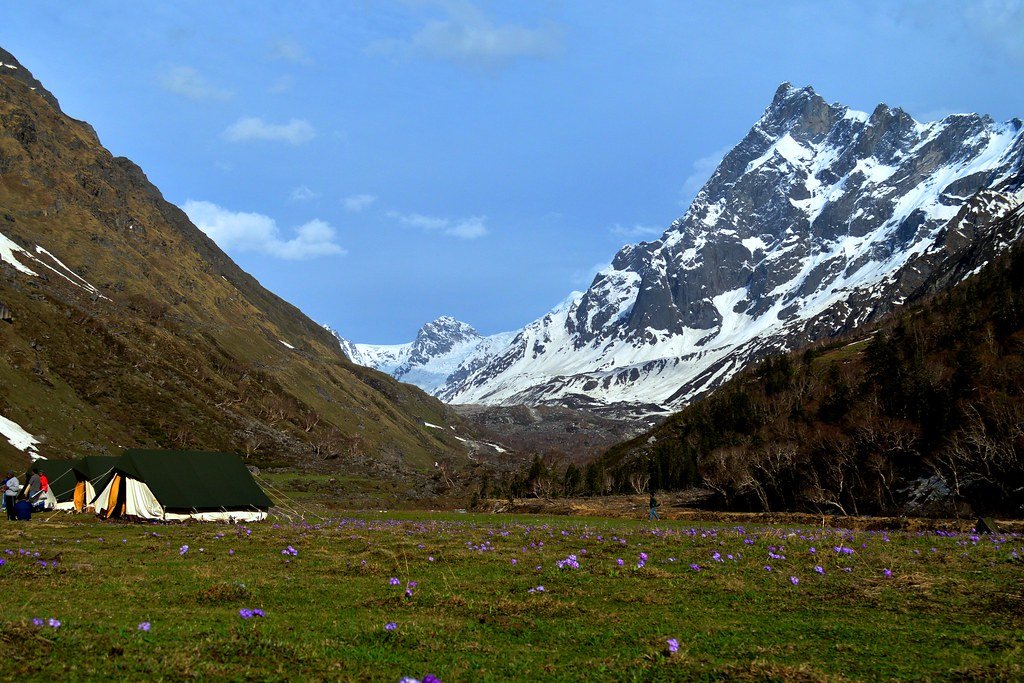Experience The Magic Of Tirthan Valley | 21 Places To Visit In Tirthan Valley | Things To Do
Tirthan Valley, nestled in Himachal Pradesh’s Kullu District, is a serene destination enveloped by the majestic Himalayas. Named after the Tirthan River that flows through it, this valley is a haven for nature lovers and adventure enthusiasts alike. The valley boasts of lush greenery, picturesque landscapes, and crystal-clear rivers. Visitors can indulge in activities like trekking, trout fishing, and exploring the nearby Great Himalayan National Park. The serene ambiance and stunning natural beauty make Tirthan Valley a perfect getaway for those seeking peace and tranquility amidst nature’s bounty.
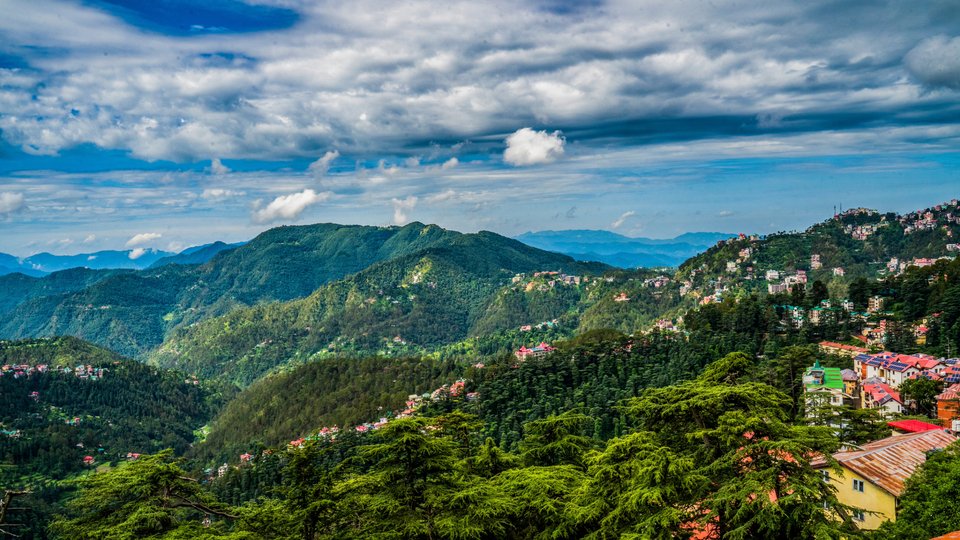
Best Places To Visit In Tirthan Valley:
Tirthan Valley ideal for nature lovers and adventure seekers, offering trekking, fishing, and bird watching. Nearby, the Great Himalayan National Park is a UNESCO site with diverse wildlife. The valley also boasts cozy homestays and guesthouses, making it perfect for relaxation and local cuisine exploration.
Here are some places to visit in Tirthan Valley:
1. Great Himalayan National Park:
The Great Himalayan National Park, located in Tirthan Valley, is a UNESCO World Heritage Site renowned for its stunning biodiversity and breathtaking landscapes. Spanning over 754 square kilometers, The GHNP was first proposed back in 1971 by Dilaram Shabab, inspired by the US National Park Service. It was fully established in 1984 and received the prestigious UNESCO World Heritage Site status in 2014. The park comprises four valleys: Tirthan, Sainj, Jiwa Nala, and Parvati, with diverse climates, resulting in remarkable biodiversity of flora and fauna. the park is a haven for nature enthusiasts and wildlife lovers. Home to a wide variety of flora and fauna, including rare and endangered species like the snow leopard and Himalayan brown bear, the park offers a unique opportunity to witness the rich biodiversity of the Himalayan region. Visitors to the Great Himalayan National Park can explore its dense forests, alpine meadows, and snow-capped peaks through various trekking routes and nature trails. The park’s pristine beauty and serene ambiance make it a must-visit destination for anyone looking to experience the untouched wilderness of the Himalayas.
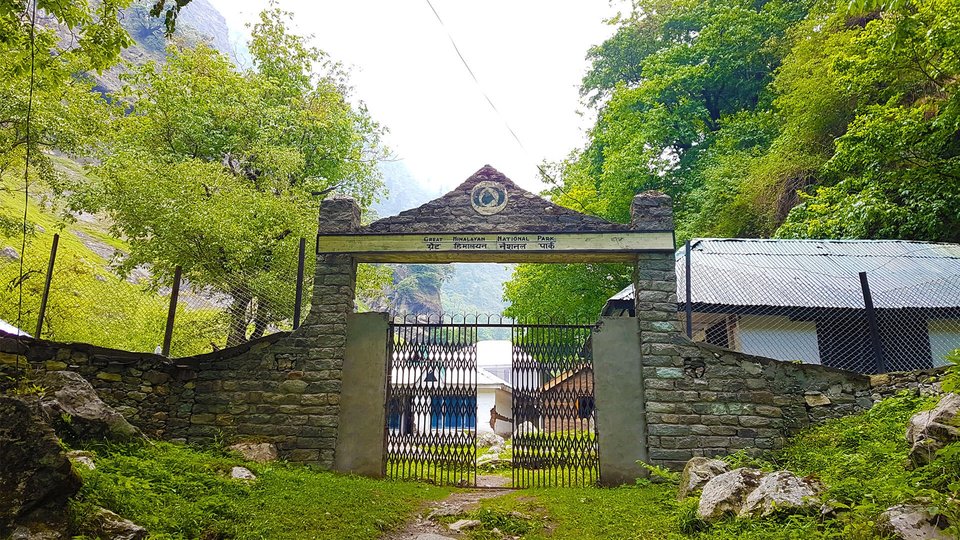
Visit Time: 10:00 am to 5:30 pm
Entry Fee: Indian Adults: ₹50 per person. Foreign Adults: ₹200 per person
Indian Students: ₹30 per person. Foreign Students: ₹100 per person
2. Tirthan River:
The Tirthan River is a picturesque waterway that flows through the stunning Tirthan Valley. Originating from the glacial springs of Hanskund peak in the Great Himalayan National Park, the river meanders through the valley, offering mesmerizing views of its crystal-clear waters against the backdrop of lush forests. The river is renowned for its diverse fish species, making it a popular spot for angling and fishing enthusiasts. The Tirthan Valley, named after this river, is a serene destination known for its natural beauty, trekking trails, and historical sites, making it a perfect getaway for nature lovers and adventurers alike.
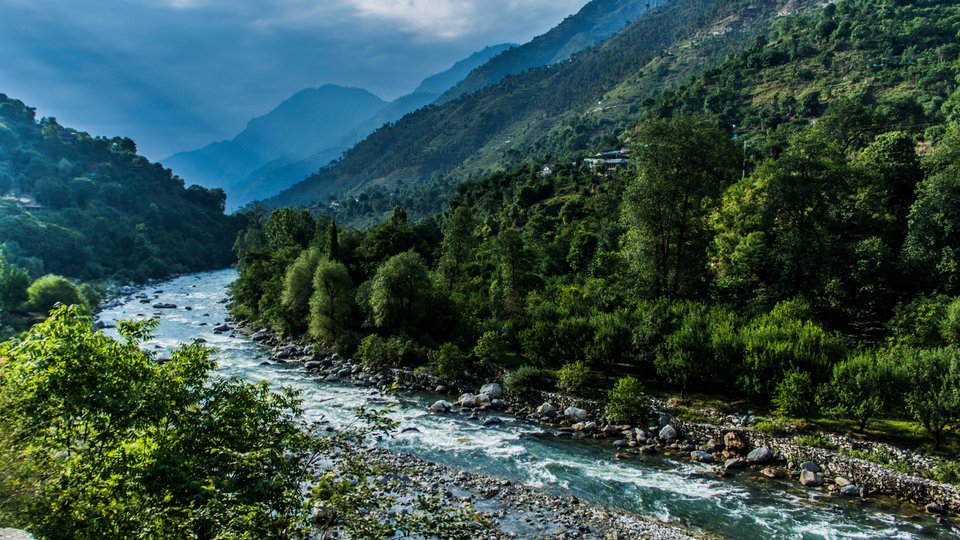
3. Jalori Pass:
Jalori Pass is a high mountain pass located in the Kullu district. Situated at an altitude of 3,120 meters (10,240 feet) above sea level, the pass offers breathtaking views of the surrounding mountains and valleys. Jalori Pass is a popular destination for nature lovers and adventure enthusiasts, offering opportunities for trekking and hiking. The pass is also known for its scenic beauty, with lush greenery, meadows, and forests adding to its charm. It serves as a gateway to the beautiful Tirthan Valley and is a must-visit destination for those seeking a peaceful retreat amidst nature’s splendor.
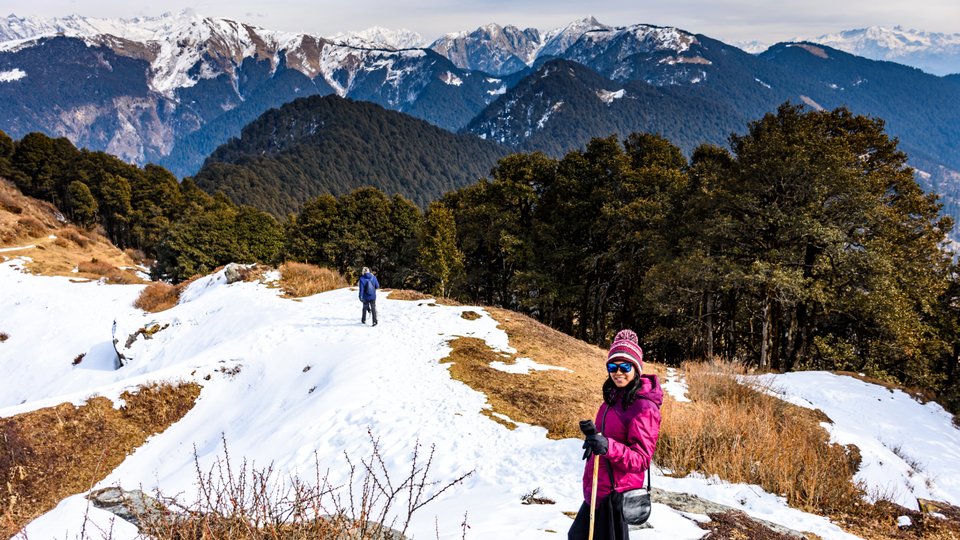
4. Seraj Valley:
Seraj Valley and Tirthan Valley are both captivating destinations in the Himachal Pradesh region of India. Let’s explore each of them:
- Seraj Valley:
- Located in the Mandi district, Seraj Valley is a hidden gem waiting to be discovered. Here, you’ll encounter:
- Green trees and tall mountains that create a picturesque landscape.
- Pleasant weather and stunning views that exemplify nature’s beauty.
- Approximately 40 kilometers from Mandi’s district headquarters, the valley begins its enchanting journey.
- Janjehli, within Seraj Valley, serves as a base for the famous Shikari Devi Temple, which lies about 16 kilometers away.
- The state government is actively working on developing this serene valley into a popular tourist spot.
- If you seek solace and want to immerse yourself in nature’s embrace, Seraj Valley awaits you.
- How to Get There:
- From Delhi, take semi-sleeper buses to Aut, Himachal Pradesh (an overnight journey).
- From Aut, hire local cabs to reach Gadagusain (approximately 3 hours away).
- Alternatively, take a local bus from Aut to Banjar, and then another bus to Gadagusain, your gateway to Seraj Valley.
- Located in the Mandi district, Seraj Valley is a hidden gem waiting to be discovered. Here, you’ll encounter:
- Tirthan Valley (within Seraj Valley):
- Tirthan is the name of the river that flows through this region.
- The entire area is known as Seraj, but for tourists’ convenience, it is referred to as Tirthan Valley.
- The valley is divided into three parts:
- Inner Seraj
- Outer Seraj
- Mandi Seraj
- Shoja, a tiny hamlet nestled in Seraj Valley, connects the Shimla and Kullu districts. It offers breathtaking views of sloped mountains, lush vegetation, and snow-covered peaks. Shoja is approximately 38 kilometers from Aut and is best visited during April to June and September to October.
Both Seraj Valley and Tirthan Valley promise tranquility, natural beauty, and unforgettable experiences. Whether you choose to explore the lesser-known Seraj Valley or venture into Tirthan Valley, you’re in for a treat!

5. Chehni Kothi:
Chehni Kothi, located near Tirthan Valley, is a fascinating sightseeing spot. Let me share some intriguing details about it:
- Structure and History:
- Chehni Kothi is a majestic tower constructed from stone and wood.
- It is believed to have been built in the 17th century.
- Originally, it was a 7-storey tower, but it suffered damage during the 1905 earthquake.
- Despite the damage, it remains one of the tallest structures built in traditional local architecture in the entire Himachal Pradesh region.
- Unique Features:
- This earthquake-proof structure stands as a testament to ancient craftsmanship.
- King Raja Rana Dhadia once resided here.
- The tower temple of Chehni Kothi is the tallest standing structure of its kind in the Western Himalayas.
- Location and Accessibility:
- Chehni Kothi is situated in the Jibhi valley, approximately 22 km from Tirthan Valley.
- To reach it, you can either drive on a steep track or embark on an hour-long hike.
- Architectural Wonder:
- Also known as Dhadhia Kothi, it used to be 15 storeys high before the 1905 earthquake.
- Built in the traditional style, Chehni Kothi stands as the tallest free-standing structure in the entire Western Himalayan region.
- Astounding Views:
- From an elevation of 2110 meters, Chehni Kothi offers panoramic vistas of valleys and ridgetops.
- Its antique core features the 350-year-old fort-towers, which are between six and 11 storeys high, depending on how you count them.
- The distinct Pisa-like lean adds to its allure
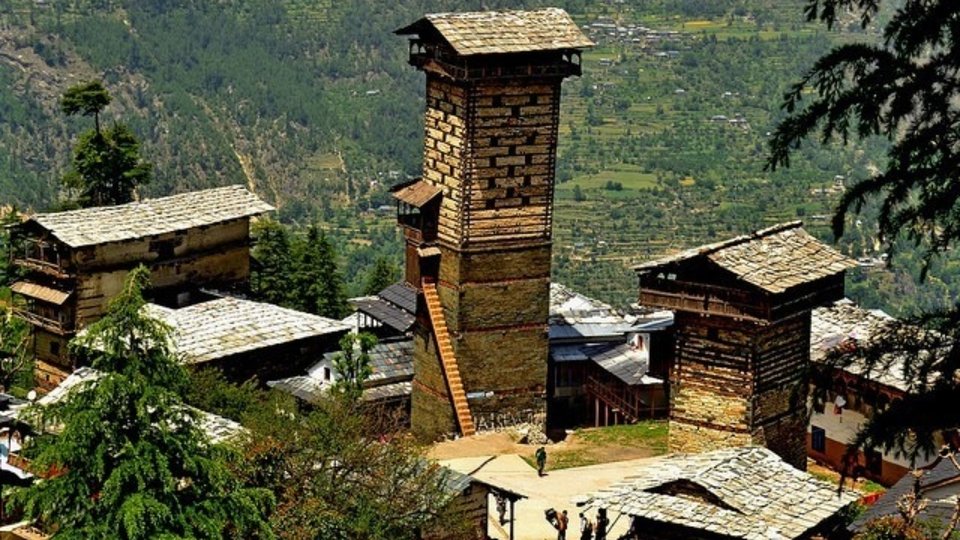
6. Gushaini:
Gushaini is a charming village nestled in the Tirthan Valley. Surrounded by lush green forests, majestic mountains, and the gurgling Tirthan River, Gushaini offers a serene escape into nature. The village is known for its traditional wooden houses, apple orchards, and terraced fields, creating a picturesque setting. Gushaini is a gateway to the Great Himalayan National Park and serves as a starting point for many treks and nature walks in the region. The village offers a peaceful ambiance, making it an ideal destination for nature lovers and those seeking a tranquil retreat in the Himalayas.
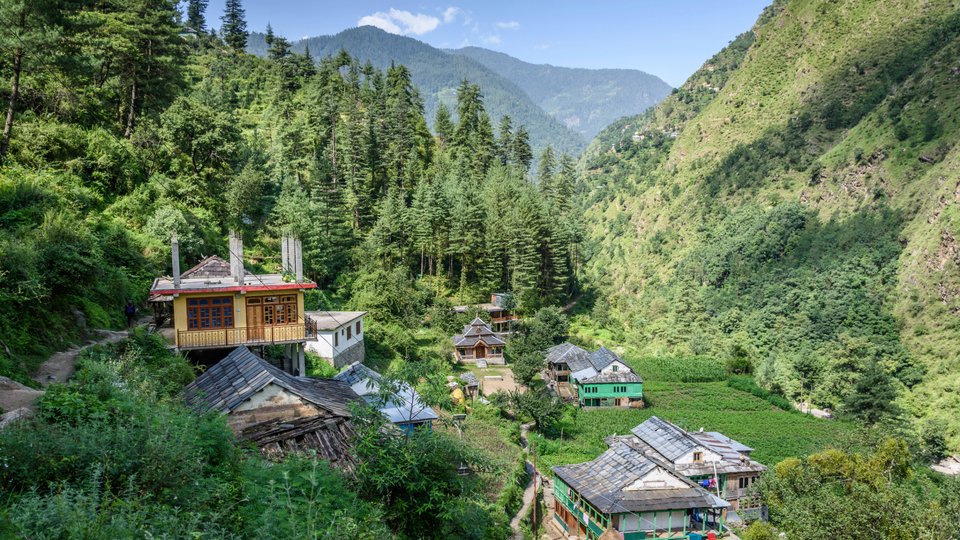
7. Chhoie Waterfall:
Chhoie Waterfall is a stunning natural attraction located in the picturesque Tirthan Valley. The waterfall is known for its cascading waters that drop from a considerable height, creating a mesmerizing sight and a soothing ambiance. Surrounded by lush greenery and towering trees, Chhoie Waterfall offers a serene escape into nature’s beauty. The trek to the waterfall is an adventure in itself, with scenic trails that wind through forests and meadows. Visitors can relax by the waterfall, enjoy a picnic amidst nature, and soak in the tranquility of the surroundings. Chhoie Waterfall is a must-visit destination for nature lovers and those seeking a peaceful retreat amidst the Himalayan mountains.
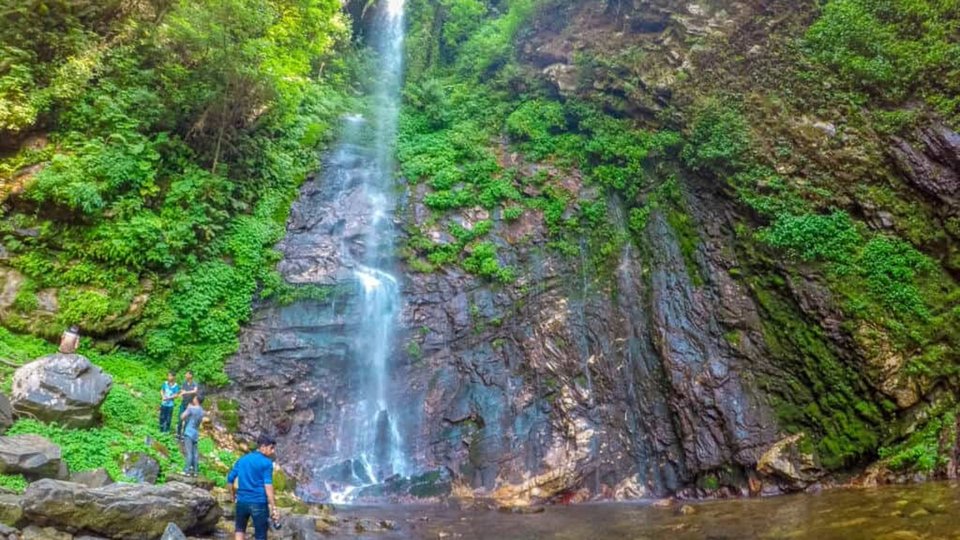
8. Serolsar Lake:
Serolsar Lake is a hidden gem nestled in the serene Tirthan Valley. Located amidst dense forests and towering mountains, this pristine lake offers a tranquil escape into nature. The emerald waters of Serolsar Lake are fed by glacial streams, creating a stunning reflection of the surrounding landscape. The lake is surrounded by lush greenery and is a popular spot for picnics and nature walks. A trek through the forest leads to this beautiful lake, offering breathtaking views along the way. Serolsar Lake is a haven for birdwatchers and nature enthusiasts, with its peaceful ambiance and stunning natural beauty.
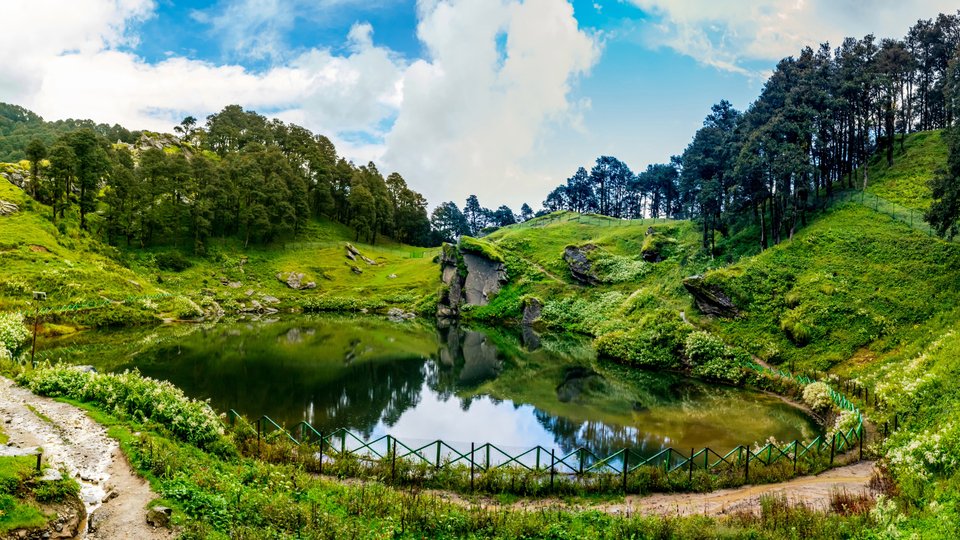
9. Shringi Rishi Temple:
Shringi Rishi Temple is a revered ancient temple located in the picturesque Tirthan Valley. Dedicated to Sage Shringi Rishi, the temple is renowned for its spiritual significance and architectural beauty. Surrounded by lush greenery and majestic mountains, the temple offers a peaceful ambiance for devotees and visitors alike. The temple is constructed in traditional Himachali style, with intricate wooden carvings and a pagoda-style roof. The sanctum sanctorum houses the idol of Sage Shringi Rishi, revered for his wisdom and benevolence. Devotees visit the temple to seek blessings for prosperity, health, and happiness. Apart from its religious significance, Shringi Rishi Temple also offers panoramic views of the surrounding valley, making it a popular spot for photography and sightseeing. The temple’s serene ambiance and stunning architecture make it a must-visit destination for those exploring the beauty and spirituality of the Tirthan Valley.

10. Budhi Nagin Temple:
Budhi Nagin Temple, located in the picturesque Tirthan Valley, is a revered Hindu temple dedicated to Nag Devta, the serpent deity. The temple is situated amidst lush greenery, surrounded by towering trees and pristine landscapes, creating a serene and spiritual ambiance. The temple is known for its ancient architecture and sacredness, attracting devotees and visitors seeking blessings and tranquility. According to local beliefs, Budhi Nagin Temple is believed to be a place where wishes are fulfilled, especially those related to fertility and prosperity. The temple’s surroundings offer a peaceful retreat, ideal for meditation and introspection. Visitors can also enjoy the natural beauty of the Tirthan Valley, with its flowing rivers, dense forests, and snow-capped mountains. Budhi Nagin Temple is not just a religious site but also a cultural landmark, reflecting the rich heritage and traditions of the region. It is a must-visit destination for those exploring the spiritual and natural beauty of the Tirthan Valley.
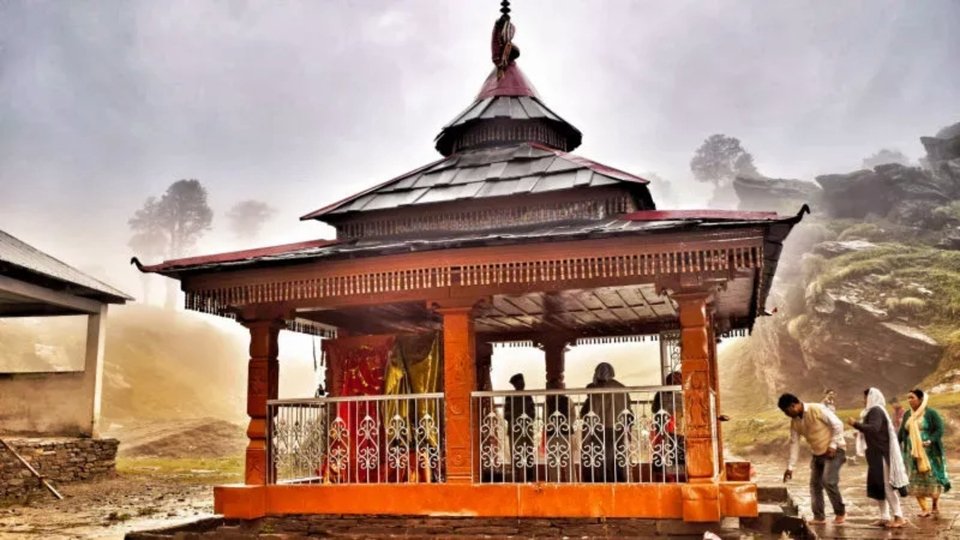
11. Raghupur Fort:
Raghupur Fort is a historical landmark located in the picturesque Tirthan Valley. Perched atop a hill, the fort offers panoramic views of the surrounding valley and mountains, making it a popular destination for tourists and history enthusiasts alike. The fort is believed to have been built during the medieval period and is named after Raghupur, a local deity worshipped in the region. The architecture of the fort reflects the traditional Himachali style, with stone walls and wooden structures. Visitors to Raghupur Fort can explore the ancient ruins, including the fort walls, watchtowers, and inner chambers. The fort’s location amidst nature adds to its charm, offering a peaceful and scenic setting for visitors to enjoy. Raghupur Fort is not only a historical site but also a cultural landmark, reflecting the rich heritage and history of the Tirthan Valley. It is a must-visit destination for those interested in history and those seeking to explore the natural beauty of the Himalayas.

12. Banjar:
Banjar is a quaint town situated in the picturesque Tirthan Valley. Surrounded by lush greenery, towering mountains, and meandering rivers, Banjar offers a tranquil escape into nature’s lap. The town is known for its traditional Himachali architecture, with wooden houses and slate roofs adding to its charm. Banjar serves as a gateway to the Great Himalayan National Park, a UNESCO World Heritage Site known for its diverse flora and fauna. The park offers opportunities for trekking, birdwatching, and wildlife spotting, making it a paradise for nature enthusiasts and adventure seekers. The town of Banjar itself is a delight to explore, with its bustling markets, quaint cafes, and friendly locals. Visitors can immerse themselves in the local culture, taste traditional Himachali cuisine, and shop for souvenirs made by local artisans. Banjar is also known for its annual fairs and festivals, where locals come together to celebrate their heritage and traditions. These events offer a glimpse into the vibrant culture of the region and are a must-visit for anyone looking to experience the true essence of Himachal Pradesh.
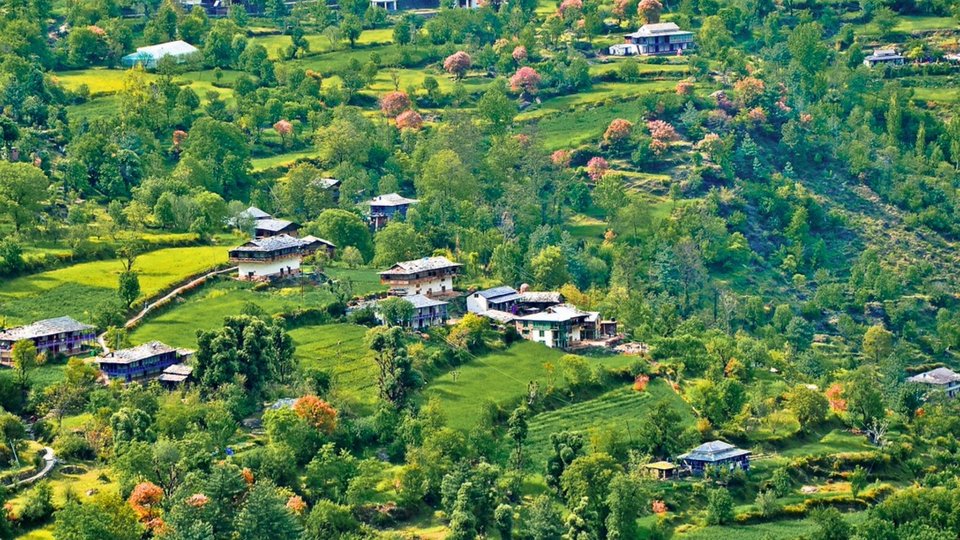
13. Rolla trek:
Rolla is a scenic camping site located in the Tirthan Valley. Situated along the banks of the glistening Tirthan River, Rolla offers a serene escape into nature’s beauty. Surrounded by lush forests and towering mountains, Rolla is a perfect destination for camping and trekking enthusiasts. The trek to Rolla is an adventure in itself, with picturesque trails that wind through pine forests and meadows. The campsite at Rolla is equipped with basic facilities, making it an ideal spot for a peaceful retreat amidst nature. Visitors to Rolla can enjoy activities like birdwatching, nature walks, and photography. The pristine beauty of Rolla, with its crystal-clear river and stunning surroundings, makes it a popular destination for nature lovers seeking a tranquil getaway.
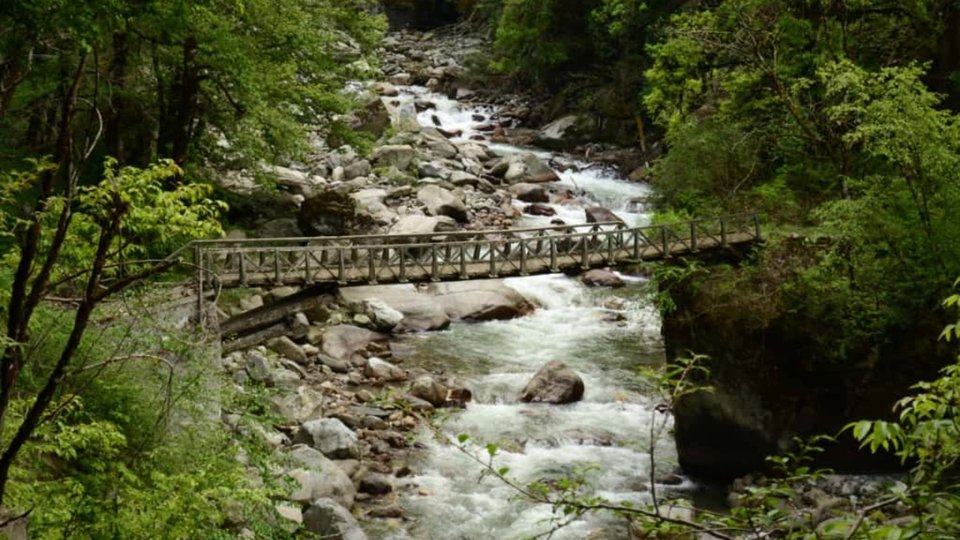
14. Sharchi Village:
Sharchi Village is a charming hamlet nestled in the picturesque Tirthan Valley. Surrounded by lush greenery and snow-capped mountains, Sharchi offers a peaceful retreat amidst nature’s beauty. The village is known for its traditional Himachali architecture, with wooden houses and slate roofs adding to its rustic charm. Sharchi Village is a great place for nature walks, offering stunning views of the valley and the Tirthan River. Visitors can also explore the nearby forests and meadows, which are home to a variety of flora and fauna. The village is inhabited by friendly locals who are known for their warm hospitality. Visitors can experience the local way of life, taste traditional Himachali cuisine, and learn about the rich culture and heritage of the region. Sharchi Village is a hidden gem in the Tirthan Valley, offering a peaceful and authentic Himalayan experience. It is a must-visit destination for those looking to escape the hustle and bustle of city life and immerse themselves in the beauty of nature.
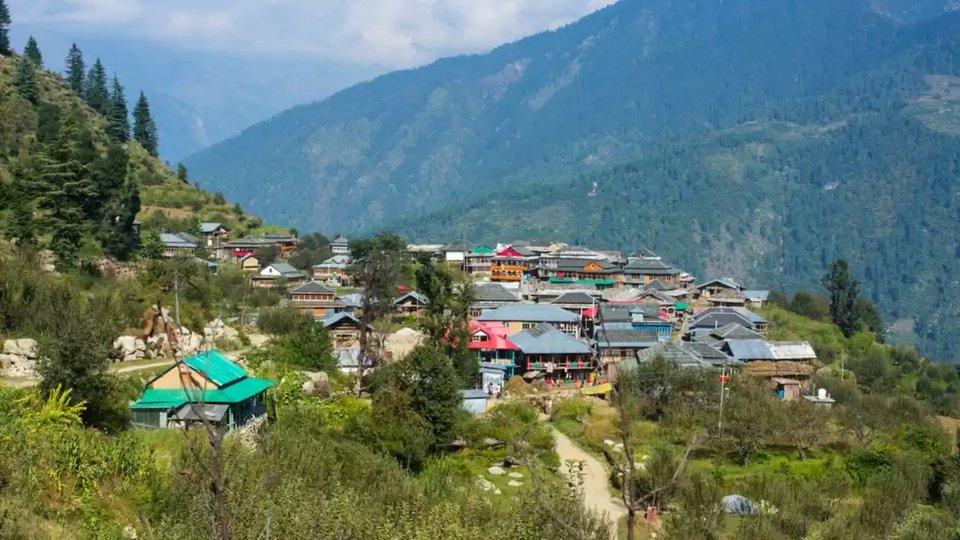
15. Shilhi Village:
Shilhi Village is a picturesque village located in the Tirthan Valley. Surrounded by lush greenery and snow-capped mountains, Shilhi offers a serene escape into nature’s beauty. The village is known for its traditional Himachali architecture, with wooden houses and slate roofs adding to its charm. Shilhi is a great place for nature lovers and adventure enthusiasts, offering opportunities for trekking, hiking, and birdwatching. The village is also home to a variety of flora and fauna, making it a paradise for wildlife enthusiasts. The village is inhabited by friendly locals who are known for their warm hospitality. Visitors can experience the local way of life, taste traditional Himachali cuisine, and learn about the rich culture and heritage of the region. Shilhi Village is a hidden gem in the Tirthan Valley, offering a peaceful and authentic Himalayan experience. It is a must-visit destination for those looking to experience the beauty of nature and immerse themselves in the local culture.

16. Bagori Thach:
Bagori Thach is a beautiful meadow located in the Tirthan Valley. Surrounded by dense forests and towering mountains, Bagori Thach offers breathtaking views of the surrounding landscape. The meadow is known for its lush greenery and colorful wildflowers, making it a popular destination for nature lovers and photographers. Bagori Thach is also a great place for camping and trekking, with several trekking routes leading to the meadow. The trek to Bagori Thach is an adventure in itself, with scenic trails that wind through forests and meadows. Visitors to Bagori Thach can enjoy the peaceful ambiance of the meadow, relax amidst nature, and soak in the beauty of the surroundings. The meadow is also home to a variety of birds and wildlife, making it a paradise for birdwatchers and wildlife enthusiasts.

17. Munna Thach:
Munna Thach is a picturesque meadow located in the serene Tirthan Valley. Surrounded by lush greenery and towering mountains, Munna Thach offers a tranquil escape into nature’s lap. The meadow is known for its stunning views of the surrounding landscape, with the Tirthan River flowing gently nearby. Munna Thach is a popular camping and trekking destination, with several trekking routes leading to the meadow. The trek to Munna Thach is an adventure in itself, with scenic trails that wind through forests and meadows, offering breathtaking views along the way. Visitors to Munna Thach can enjoy the peaceful ambiance of the meadow, relax amidst nature, and soak in the beauty of the surroundings. The meadow is also home to a variety of flora and fauna, making it a paradise for nature lovers and wildlife enthusiasts.
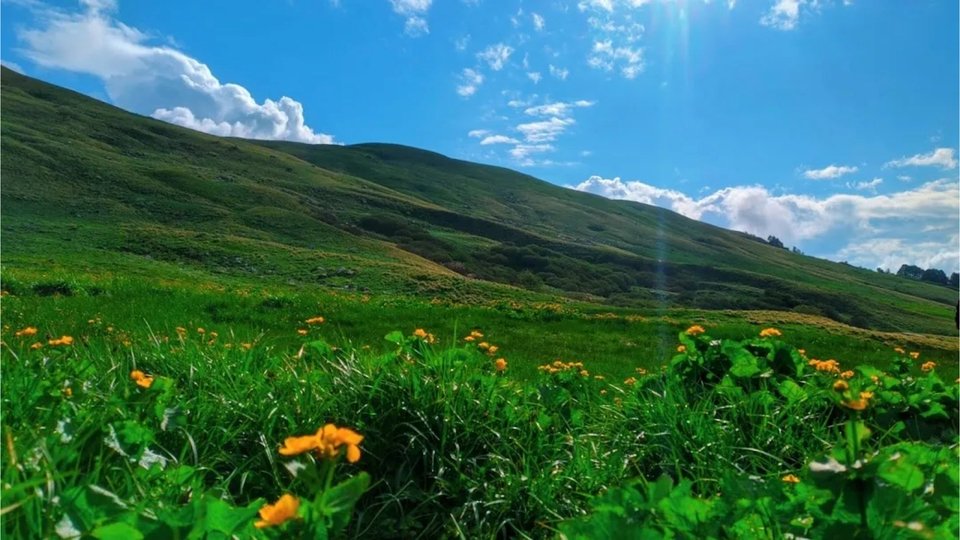
18. Ghalingcha Village:
Ghalingcha Village is a charming Himalayan hamlet located in the serene Tirthan Valley. Surrounded by majestic mountains and lush greenery, Ghalingcha offers a peaceful retreat amidst nature’s beauty. The village is known for its traditional Himachali architecture, with stone houses and slate roofs adding to its rustic charm. Ghalingcha is a great place for nature walks, offering stunning views of the valley and the Tirthan River. Visitors can also explore the nearby forests and meadows, which are home to a variety of flora and fauna. The village is inhabited by friendly locals who are known for their warm hospitality. Visitors can experience the local way of life, taste traditional Himachali cuisine, and learn about the rich culture and heritage of the region. Ghalingcha Village is a hidden gem in the Tirthan Valley, offering a peaceful and authentic Himalayan experience. It is a must-visit destination for those looking to escape the hustle and bustle of city life and immerse themselves in the beauty of nature.

19. Shrikhand Mahadev:
Shrikhand Mahadev is a sacred mountain peak located in the Kullu district, near the Tirthan Valley. It is renowned for its religious significance as it is believed to be the abode of Lord Shiva. The peak stands at an altitude of 5,227 meters (17,148 feet) and is a popular pilgrimage destination for devotees and trekkers. The trek to Shrikhand Mahadev is considered challenging and requires a good level of fitness and stamina. The route takes trekkers through rugged terrain, dense forests, and high-altitude meadows, offering breathtaking views of the surrounding mountains and valleys. The peak is named after the mythical “Shrikhand,” a legendary weapon of Lord Shiva. The Shrikhand Mahadev Yatra, held annually during the months of July and August, sees thousands of devotees undertake the arduous trek to seek the blessings of Lord Shiva. Shrikhand Mahadev is not only a sacred pilgrimage site but also a haven for adventure enthusiasts seeking a challenging trek amidst stunning Himalayan landscapes.
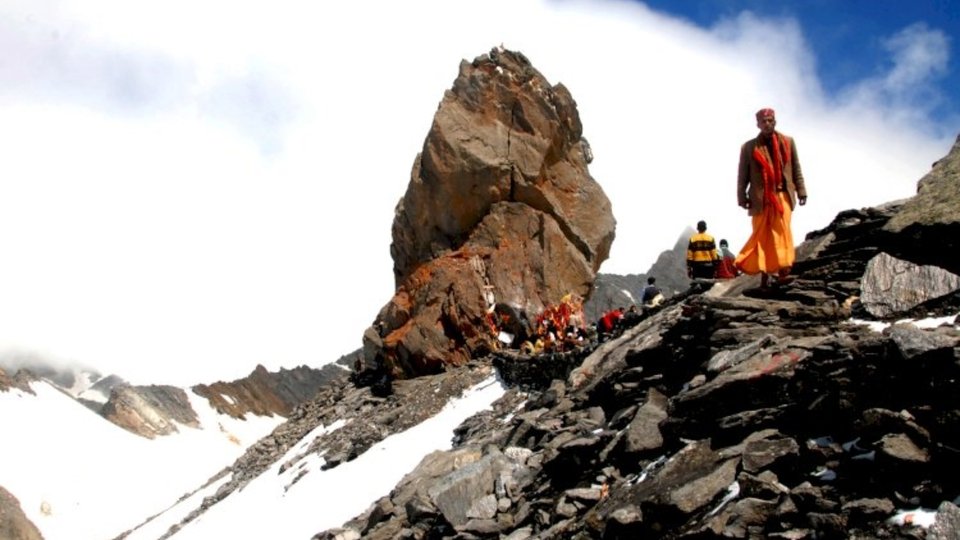
20. Bashleo Pass:
Bashleo Pass is a high-altitude mountain pass located in the Tirthan Valley. Situated at an elevation of approximately 3,200 meters (10,500 feet) above sea level, the pass offers stunning views of the surrounding Himalayan mountains and valleys. The trek to Bashleo Pass is a challenging yet rewarding experience, taking trekkers through dense forests, alpine meadows, and rocky terrain. Along the way, trekkers can enjoy panoramic views of snow-capped peaks, vibrant wildflowers, and cascading waterfalls. Bashleo Pass is also known for its rich biodiversity, with a variety of flora and fauna found in the region. The pass is a paradise for birdwatchers and nature enthusiasts, offering glimpses of several bird species and wildlife. The trek to Bashleo Pass is best undertaken during the summer months, from May to October, when the weather is pleasant and the pass is accessible. It is a must-visit destination for adventure enthusiasts looking to explore the untouched beauty of the Himalayas.
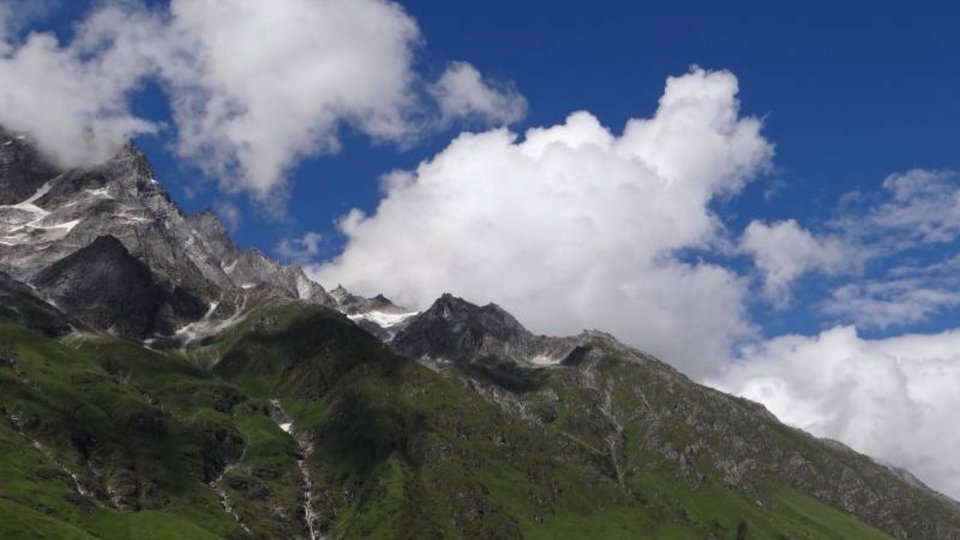
21. Jibhi:
Jibhi is a picturesque village nestled in the scenic Tirthan Valley. Surrounded by lush greenery, towering mountains, and glistening streams, Jibhi offers a tranquil escape into nature’s lap. The village is known for its traditional wooden houses, apple orchards, and terraced fields, creating a charming rural setting. Jibhi is a great place for nature lovers and adventure enthusiasts, offering opportunities for trekking, hiking, and camping. The village is also known for its warm hospitality, with friendly locals who are always ready to welcome visitors with open arms. Visitors to Jibhi can explore the nearby Jalori Pass, Serolsar Lake, and other attractions in the Tirthan Valley. The village is also a great place to sample traditional Himachali cuisine and experience the local way of life. Jibhi is a hidden gem in the Tirthan Valley, offering a peaceful and authentic Himalayan experience. It is a must-visit destination for those looking to escape the hustle and bustle of city life and immerse themselves in the beauty of nature.
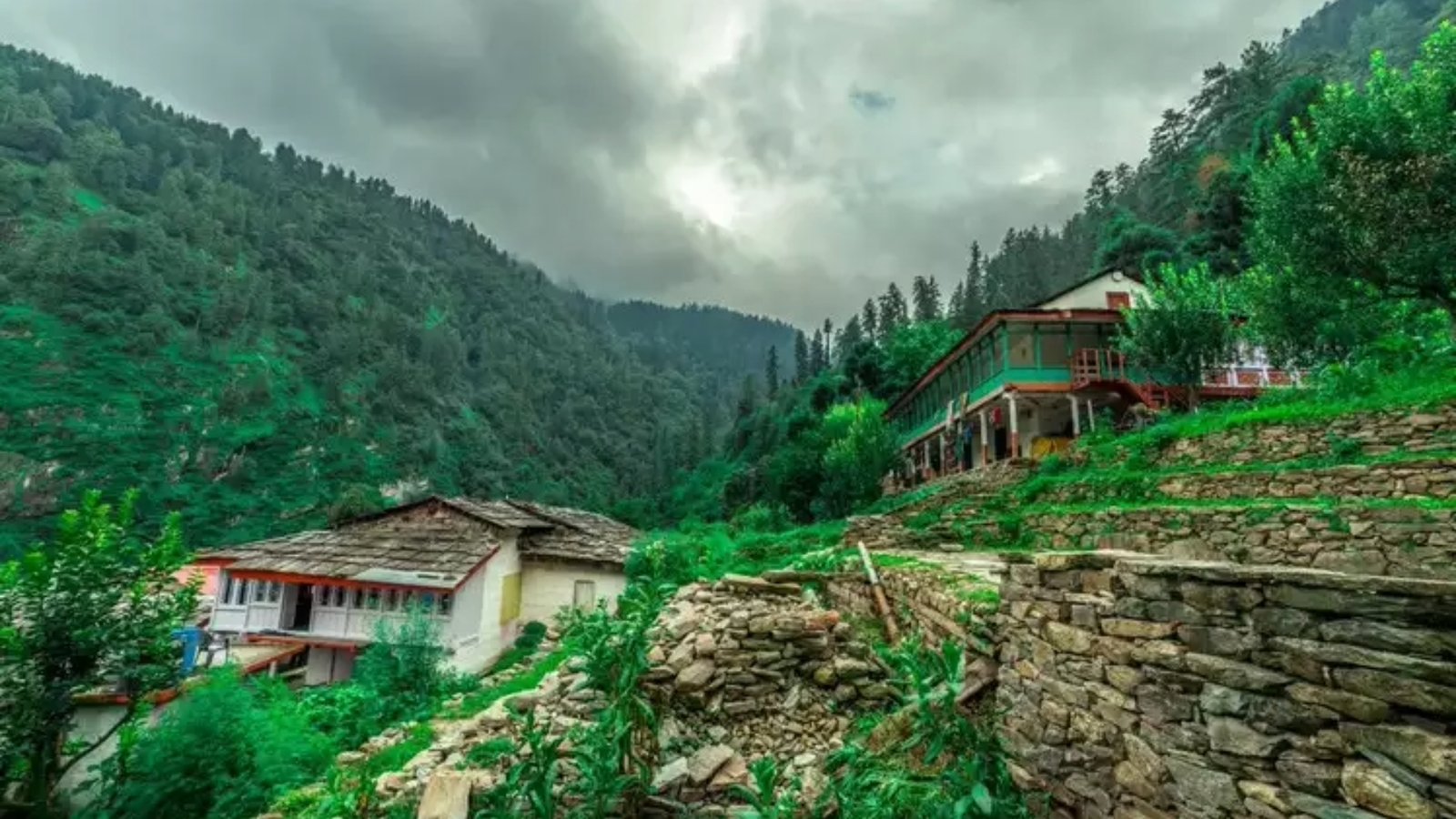
Things To Do At Tirthan Valley
1. Rock Climbing:
Rock climbing in Tirthan Valley offers a thrilling adventure amidst the stunning landscapes. The valley’s rocky terrain, dotted with cliffs and boulders, provides ample opportunities for climbers of all levels to test their skills. With the majestic Himalayas as a backdrop, rock climbing in Tirthan Valley is not just a physical challenge but also a visual treat. Climbers can choose from various routes, each offering its own set of challenges and rewards. Whether you’re a beginner looking to learn the ropes or an experienced climber seeking a new challenge, Tirthan Valley has something to offer. The valley’s natural beauty, coupled with the adrenaline rush of rock climbing, makes it a must-visit destination for adventure enthusiasts.

2. Trekking Points
- Jalori Pass: Known for its scenic beauty and panoramic views, Jalori Pass offers trekking opportunities amidst lush greenery and snow-capped mountains.
- Great Himalayan National Park (GHNP): GHNP offers various trekking routes, including the Sainj Valley Trek and the Ropa Valley Trek, showcasing the rich biodiversity of the region.
- Serolsar Lake: A trek to Serolsar Lake takes you through dense forests and offers a tranquil lake surrounded by breathtaking views of the Himalayas.
- Chehni Kothi: This trek leads to the ancient Chehni Kothi temple, known for its unique architecture and stunning views of the valley.
- Raghupur Fort: The trek to Raghupur Fort takes you through scenic landscapes and offers a glimpse into the region’s history and heritage.
How To Reach Delhi To Tirthan Valley
- By Road:
- Self-Drive or Private Taxi: The most flexible option is to drive from Delhi to Tirthan Valley. It’s approximately a 10-12 hour drive, covering around 500-550 kilometers via NH44 and NH3. The route passes through Ambala, Chandigarh, Bilaspur, and Aut before reaching Tirthan Valley.
- Bus: Several buses operate from Delhi to Aut, which is the nearest major bus stop to Tirthan Valley. From Aut, you can take a local taxi or bus to reach Tirthan Valley.
- Book A Cab: you can book a cab from our website along with a customized itinerary, or can hire just a cab for your next trip. So just do hurry. Call Us On: +911223577273
- By Train and Road:
- Train: Take a train from Delhi to Chandigarh or Ambala. From there, you can either hire a taxi or take a bus to Aut or Banjar, which are the nearest major stops to Tirthan Valley.
- Road: From Aut or Banjar, you can hire a local taxi or take a bus to reach Tirthan Valley.
Here Are some Trains From Delhi To Chandigarh Railway Station
| Train Name | Train Number | Departure Time | Arrival Time | Approximate Charges (3AC) |
|---|---|---|---|---|
| Shatabdi Express | 12045 | 06:00 AM | 11:05 AM | INR 1,000 – 1,500 |
| Kalka Shatabdi Express | 12011 | 17:15 PM | 21:10 PM | INR 1,000 – 1,500 |
| Himalayan Queen | 14095 | 05:35 AM | 10:45 AM | INR 700 – 1,000 |
| Paschim Express | 22926 | 11:05 AM | 16:15 PM | INR 500 – 800 |
- By Air and Road:
- Flight: Take a flight from Delhi to Bhuntar Airport (Kullu-Manali Airport), which is the nearest airport to Tirthan Valley. From Bhuntar, you can hire a taxi or take a bus to reach Tirthan Valley.
Nearby Places To Visit Tirthan Valley
| City | Distance from Tirthan Valley | Places to Visit |
|---|---|---|
| Mandi | 75 km | – Rewalsar Lake – Bhootnath Temple – Panchvaktra Temple |
| Kullu | 70 km | – Raghunath Temple – Bijli Mahadev Temple – Great Himalayan National Park |
| Manali | 110 km | – Hadimba Temple – Solang Valley – Rohtang Pass |
| Shimla | 175 km | – The Ridge – Mall Road – Jakhoo Temple |
| Dharamshala | 210 km | – McLeod Ganj – Dalai Lama Temple – Bhagsu Waterfall |
Best Time To Visit In Tirthan Valley
The best time to visit Tirthan Valley depends on the season and the experience you seek. Summer (March to June) is ideal for pleasant weather and outdoor activities. Monsoon (July to September) offers lush greenery but may have roadblocks. Autumn (October to November) boasts pleasant weather and colorful landscapes. Winter (December to February) turns the valley into a snowy paradise, perfect for winter sports enthusiasts. Choose your visit time based on your preferences and the activities you wish to pursue.
Frequently Asked Question
What is the Tirthan Valley famous for?
Tirthan Valley is famous for its pristine natural beauty, offering lush green landscapes, snow-capped mountains, and glistening rivers. It is also renowned for its trekking trails, wildlife, and serene ambiance, making it a popular destination for nature lovers and adventure enthusiasts.
How difficult is Tirthan Valley Trek?
The difficulty of the Tirthan Valley trek depends on the specific route and your fitness level, but generally, it is considered a moderate trek suitable for beginners. The terrain includes gentle slopes, forests, and some steep sections, offering a mix of challenges and scenic views.
Is it safe to drive to Tirthan Valley?
Yes, driving to Tirthan Valley is generally safe, but the mountain roads can be narrow and winding, requiring careful driving, especially during monsoon or winter. It’s advisable to check the road conditions and weather forecast before your trip.
What is the Speciality of Jibhi?
Jibhi is known for its serene ambiance, lush greenery, and traditional wooden architecture, offering a peaceful retreat amidst nature’s beauty. It is also famous for its apple orchards, picturesque landscapes, and the nearby Jibhi Waterfall, making it a popular destination for nature lovers and photographers.



